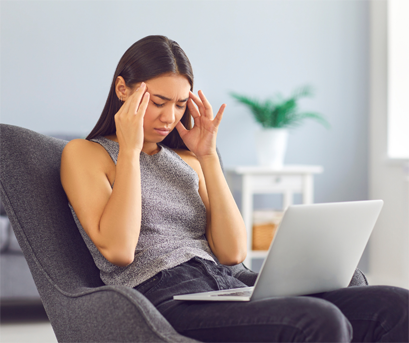Is your headache a migraine?
May 27, 2021
Nearly one in four U.S. households include someone that suffers from migraines. June is National Migraine and Headache Awareness Month. A migraine can be a debilitating condition and many people have a hard time differentiating between a headache and a migraine.
A headache causes pressure and pain in the head that can be anywhere from moderate to severe. Symptoms might last from under an hour to a couple of days. One of the most common headaches is a tension headache, which can be triggered by stress or anxiety.
Migraines are severe headaches that have symptoms that go beyond head pain. Common symptoms include nausea, pain behind the eyes and temples, sensitivity to light and sound, pain that throbs or pulses, and vomiting. The condition can last anywhere from hours to days, be mild to severe, and even interfere with your daily activities. How often migraines occur varies from person to person. Migraines might occur rarely or strike several times a month. Migraines typically affect one side of the head but can also affect both.
There are two main types of migraines, migraines with auras and migraines without auras. The term aura is used to describe symptoms of migraine either occurring right before or during such as flashes of light or blind spots, muddled thoughts, numbness and tingling in the face or hands, an altered sense of taste, smell, and touch, and blurred vision.
Common triggers for migraines include: hormonal changes in women, alcohol or too much caffeine, stress, sensory stimuli (such as bright lights, strong smells), sleep changes, weather changes, certain medications, foods (such as salty processed, or aged cheeses), and food additives such as the sweetener aspartame and preservative MSG.
To help relieve symptoms of migraine at home you can take OTC pain killers, rest in a quiet and dark room, and apply a cool cloth to your forehead. It is important to stay hydrated, but in addition to water, small amounts of caffeine can help relieve migraine pain, as can exercise or meditation.
If you regularly have signs and symptoms of migraine, keep a record of your attacks and how you treated them. Then make an appointment with your medical provider to discuss your options.
